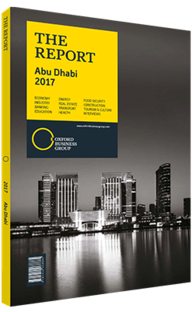Sheikh Abdulla bin Mohammed Al Hamed, Chairman, Regulation and Supervision Bureau: Interview

Interview: Sheikh Abdulla bin Mohammed Al Hamed
What have been the most significant results of the rationalisation of water and electricity tariffs?
SHEIKH ABDULLA BIN MOHAMMED AL HAMED: Recent studies by Al Ain Distribution Company and Abu Dhabi Distribution Company concluded that tariff reforms implemented in January 2015 had a serious impact on customer consumption patterns. This was the first time in several years that tariffs saw notable change. It was also the first time that some customers had to pay for their water use. The studies estimated that in 2015 residential customers reduced electricity and water consumption by 4-5%, and 20-25%, respectively, due to tariff reforms.
While non-residential electricity consumption exhibited little reduction, non-residential water consumption fell by around 7-8%. Overall, tariff reforms reduced electricity and water consumption for all customers by 1-2% and 14-21%, respectively.
However, this reaction is unlikely to be repeated in response to the tariff reforms implemented on January 1, 2017. This is because for many customers the changes in 2015 were likely to be the first time they had experienced an increase in the price of electricity and water. Therefore, customer reaction may have been due to the fact that there was an increase at all, as opposed to the magnitude of the increase. Customers’ behavioural responses likely included implementing the simplest and least-costly conservation measures.
How will introducing substantial nuclear and solar electricity impact the UAE’s grid?
SHEIKH ABDULLA: The Barakah nuclear power project – with an aggregate capacity of 5600 MW – will be commissioned in four phases. Each phase will have a capacity of 1400 MW. The total cost of the plant, including infrastructure and finance, is expected to be about $24.4bn, and will have a significant impact on the transmission system from both investment and stability perspectives. All new generation, regardless of technology, needs to be connected to the grid. In the case of the nuclear programme, approximately Dh2.5bn ($680.7m) is expected to be invested in connecting the new nuclear power stations, as well as in increasing the capacity of the transmission system to transport additional generation capacity to the load centres. In terms of solar, the Shams 1 project, Abu Dhabi’s first concentrated solar power plant, saw investment of Dh2.2bn ($599m). In addition, Abu Dhabi is looking to invest in a large-scale photovoltaic project with a capacity of around 880 MW at Sweihan. The costs of the project set a new world record low of 8.88 fils, or about 2.40 cents per KWh, at a bidding round of leading power producers held in Abu Dhabi in September 2016.
Given increased competition, who will be the biggest beneficiaries of lower prices?
SHEIKH ABDULLA: In the emirate of Abu Dhabi, generation and desalination projects are developed by independent water and power producers (IWPPs) on a build, own and operate basis, where projects are awarded through a competitive bidding process. These IWPPs are large-scale production companies that are privately operated and partly owned by international investors. In turn, all of the electricity and water output from these plants is sold to the single buyer – Abu Dhabi Water and Electricity Company – under long-term power and water purchase agreements (PWPAs). The reliability of electricity and water supply is a critical issue in Abu Dhabi, and these agreements are designed to incentivise plant availability and reliability.
Accordingly, the majority of payments made under the contracts are only earned when the plant is made available. Overall, using competitive bidding to drive economically efficient PWPA rates helps keep cost-reflective tariffs to their economically efficient level and keep the subsidy requirement from the government to a minimum. Any cost saving in terms of lower generation prices per KWh will be reflected in the unit cost, which will subsequently be passed on to the customers.
You have reached the limit of premium articles you can view for free.
Choose from the options below to purchase print or digital editions of our Reports. You can also purchase a website subscription giving you unlimited access to all of our Reports online for 12 months.
If you have already purchased this Report or have a website subscription, please login to continue.

